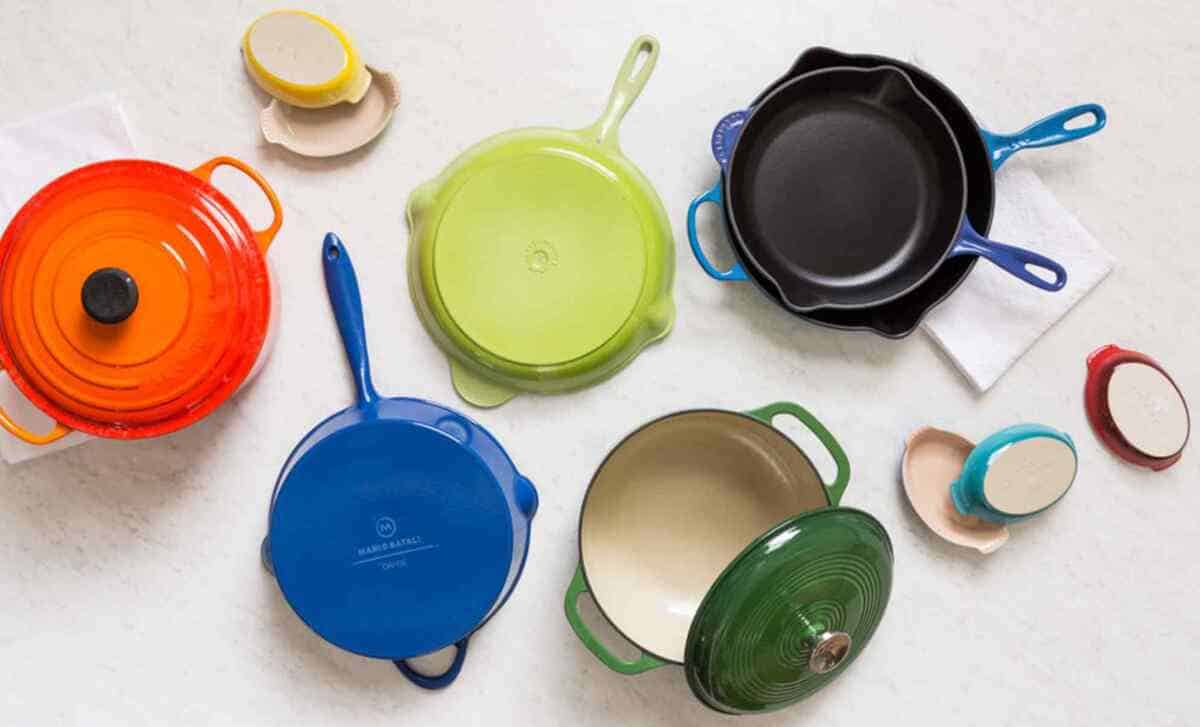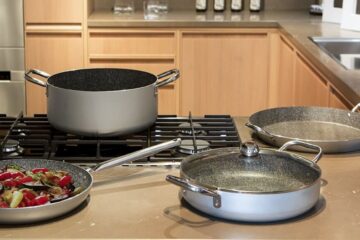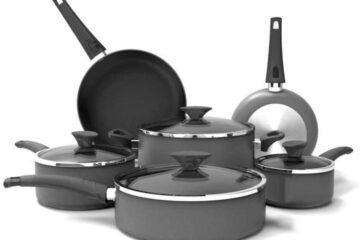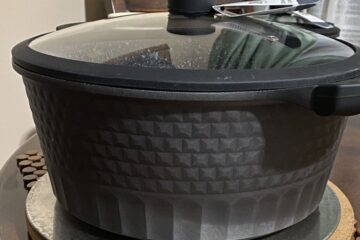Cleaning discolored enamel cookware can be a daunting task for many people. However, it is an essential part of maintaining the quality and longevity of your cookware. Enamel cookware is durable and long-lasting, but it can become discolored over time due to various factors such as heat, food stains, and scratches.
To clean discolored enamel cookware, there are various methods that can be used. Some of the most effective methods include using baking soda, vinegar, lemon juice, and laundry detergent. These methods are easy to use and can effectively remove stains and discoloration from enamel cookware. It is important to note that abrasive cleansers should be avoided as they can scratch and damage the enamel surface.
Understanding Enamel Cookware
Enamel cookware is a type of cookware that is coated with a layer of enamel, which is a type of glass. This coating provides several benefits, including preventing rust and corrosion, making the cookware non-reactive to acidic foods, and creating a non-stick surface.
Enamel cookware is made by coating a metal base (usually cast iron or steel) with a layer of enamel. The enamel is typically made from a mixture of powdered glass, clay, and water, which is then applied to the metal base and fired at a high temperature to create a smooth, durable coating.
Enamel cookware is available in a wide range of colors and styles, and can be used for a variety of cooking methods, including baking, roasting, and frying. However, it is important to note that enamel cookware is not suitable for use on high heat, as the enamel can crack or chip if exposed to extreme temperatures.
To care for enamel cookware, it is important to avoid using abrasive cleaners or utensils that can scratch the enamel surface. Instead, use a non-abrasive sponge or brush to clean the cookware, and avoid storing food in the pan for an extended period of time. Additionally, exposure to hard water or mineral deposits can cause discoloration or staining, so it is important to clean the cookware regularly to prevent buildup.
Common Causes of Discoloration
Enamel cookware is a great addition to any kitchen, but it can become discolored over time. Here are some common causes of discoloration:
- Heat: Exposing enamel cookware to high heat for an extended period can cause discoloration. This can happen if the cookware is left on a hot burner for too long or if it is used in the oven at a temperature that exceeds the manufacturer’s recommendations.
- Stains: Enamel cookware can become stained if it is used to cook foods that are highly pigmented, such as tomato sauce or beetroot. These stains can be difficult to remove and may require special cleaning techniques.
- Scratches: Scratches on the surface of enamel cookware can cause discoloration over time. This is because the scratches can trap food particles, which can then become burnt on and cause discoloration.
- Abrasive cleaners: Using abrasive cleaners or scrubbers on enamel cookware can cause discoloration. This is because the abrasive materials can scratch the surface of the enamel, which can then trap food particles and cause discoloration.
To prevent discoloration, it is important to follow the manufacturer’s instructions for use and care. This includes avoiding high heat, using non-abrasive cleaners, and avoiding cooking highly pigmented foods in the cookware. If discoloration does occur, there are several methods for cleaning it, which will be discussed in later sections.
The Cleaning Process
Cleaning discolored enamel cookware is a simple process that can be done with a few basic steps. Here are the steps to follow:
Step 1: Soak the Cookware
Fill the discolored enamel cookware with hot water and add a few drops of dish soap. Allow the cookware to soak for about 15 minutes. This will loosen any stuck-on food residue and make it easier to clean.
Step 2: Scrub with Baking Soda
After soaking, use a non-abrasive sponge or brush to scrub away any remaining stains or discoloration. Sprinkle baking soda on the sponge or brush to help remove tough stains. Avoid using metal or rough sponges as they may scratch the enamel.
Step 3: Rinse and Dry
Rinse the cookware thoroughly with hot water to remove any remaining soap and baking soda. Use a dishtowel to properly dry the cookware. Avoid air-drying, as this can cause water spots.
Step 4: Polish the Cookware
To restore the shine of the enamel, polish the cookware with a soft cloth. You can use a few drops of vegetable oil on the cloth to help restore the shine.
By following these simple steps, you can clean and restore discolored enamel cookware to its original shine.
Preventative Measures
When it comes to keeping your enamel cookware looking its best, preventative measures are key. By taking a few simple steps, you can avoid discoloration and stains in the first place, saving yourself time and effort in the long run.
Avoiding Abrasive Cleaners
One of the most important things you can do to prevent discoloration is to avoid using abrasive cleaners on your enamel cookware. These can scratch the surface of the enamel, making it more susceptible to staining and discoloration over time. Instead, opt for non-abrasive cleaners and a soft sponge or brush to gently clean your cookware.
Proper Storage
Another important preventative measure is proper storage. When storing enamel cookware, it’s important to make sure it’s completely dry before putting it away. Any leftover moisture can lead to discoloration and stains over time. Additionally, avoid stacking enamel cookware on top of each other, as this can also cause scratches and damage to the enamel surface.
Conclusion
Cleaning discolored enamel cookware may seem like a daunting task, but with the right tools and techniques, it can be done easily. Using simple ingredients such as baking soda, vinegar, lemon juice, and salt can help remove stubborn stains and discoloration.
It is important to avoid using abrasive materials such as steel wool or harsh chemicals that can damage the enamel coating. Instead, opt for non-abrasive sponges or brushes and gentle cleaning agents such as dish soap or laundry detergent.
Preventative measures such as using cooking sprays or oils, avoiding high heat, and avoiding acidic foods can help prevent discoloration and staining in the first place.
By following these simple tips and techniques, you can keep your enamel cookware looking clean and vibrant for years to come.



